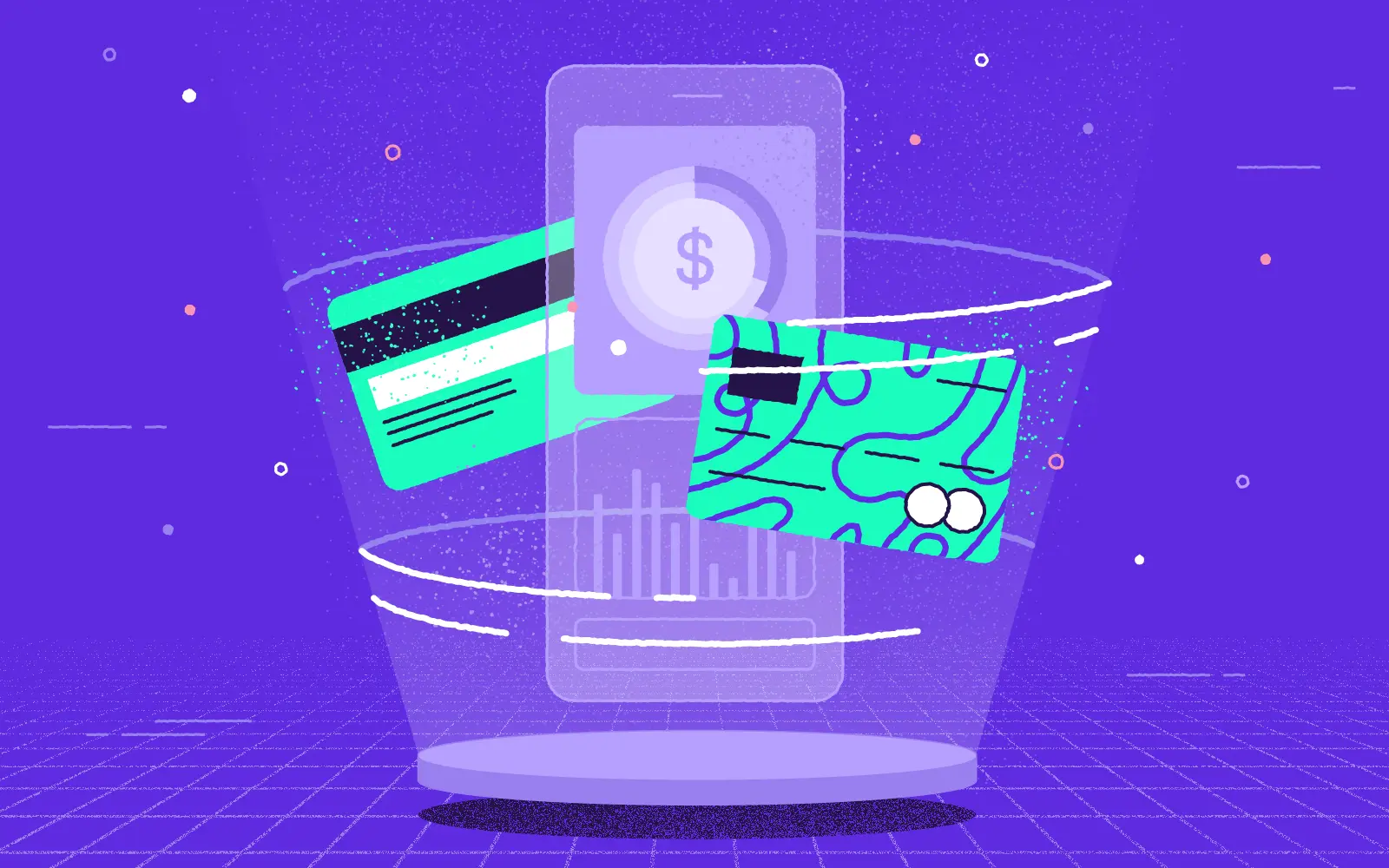The Essential Role of Market Research In Building a Virtual Bank Branch
19.07.2022 | 7 min read

Over the past ten years, the financial sector has tried to find a good balance between two important things: efficiency and security. And it's becoming more clear that digitization is the key to finding this sweet spot. Banks have come a long way in the past few years when it comes to having a strong digital presence, but they are still behind their FinTech competitors. Customers can do basic things online, most of which have to do with their current accounts. But in many banks, you still have to go into a branch to do things like open a business account or change the personal information of the account holder.
The Virtual Branch, which we’ve worked on at 10Clouds for the past year or so, aims to dynamically change the virtual customer experience. The idea was to incorporate functions such as virtual account onboarding, loan applications, deposits, customer service, and other banking services into the remote experience. Ease of use is at the core of the virtual branch experience, particularly when it comes to effectively dealing with customers’ most pressing needs. We’re excited to have some concrete results, having gone through the entire product process. We decided to speak to the Lead UX Designer, Agnieszka Zygmunt, to find out more about the first essential phase of this process, which is market and user research.
Welcome, Agnieszka. Today we’re talking about the part of the Virtual Branch market research process that you went through in two key European markets. How did it all start?
We began by deciding that we will not take any shortcuts and that we want to take a comprehensive approach to user and market research. We wanted to have a deep understanding of customer needs as well as be able to assess the market risks. We conducted a series of workshops with different stakeholders: leaders within the organizations, industry experts, and bank employees to understand the business environment.
Armed with this information, we could delve deeper and verify some of the theories that had come to light with the clients themselves. This was done in two different ways - the first was via the surveys, and the second was via direct interviews with customers - which we are still ahead of.
We created a survey, which we wanted to send out to clients of the banks that we’d partnered with us in both countries. It was a detailed piece of research that would be mutually beneficial, as it meant that the banks themselves would have an opportunity to learn more about the habits and needs of their customers, while we obtained useful insights into the potential components of the virtual branch.
Could you tell us a bit more about what the survey process looked like?
Everything started with a summary of previous actions and on this basis, defining the main hypotheses and questions that we want to validate and ask bank customers.
Then, with a ready survey, We reached out to each of the partner banks and asked them to send out the survey to their customers. Due to the nature of the study, the specificity of the target group, and supplementing the conclusions with other activities, we decided to use a smaller number of questionnaires than usually – a minimum of 100 per bank. We gave them three weeks in which to complete this. We were focused specifically on the segment of business banking clients. The banks distributed the survey on our behalf and then provided us with the anonymized raw data, which we then analyzed looking for patterns of users' behavior.
And how long does this research usually take?
It all depends on the target group and type of the project – sometimes it can even be as short as a week. Most of the time we need a day or two for compiling the questions and doing dry testing and at least two for the analysis of the results. The time in between is allocated for distribution - we managed to successfully collect the required number of responses even within 3 days!
You conducted the research in two different European markets with differing levels of maturity. Would you be able to tell us a little more about this?
Yes, so one of the markets was more mature, in that there were many more bank branches there. This meant that customers experienced more varied challenges. The other market lagged behind a little in terms of the number of branches, and hence the pain points here were different. We also had to take into account cultural norms, which differ from country to country.
The banks we were working with specifically wanted to see whether the product would be suited to these two markets and our research gave them much-needed validation. It also offered answers to questions about whether it should be rolled out in both markets simultaneously, or whether it makes sense for it to appear in one market first and then the other.
What was additionally beneficial in this particular case was this difference in market maturity - because this showed the likelihood that certain problems might appear further down the line in the less developed market.
Did you find out anything unexpected as part of the research?
Yes and no. Many elements confirmed what you might expect. For example, in the market in which more customers took advantage of telephone banking, there was a greater demand for virtual services. But even among those customers who preferred in-branch visits, there was a recognition (from all of them!) of the benefits of online support - i.e. they saw value in the existence of a virtual branch.
The overall trend that we spotted across both markets is that ultimately customers wanted support from an advisor, either in-person or remotely. They usually wanted the ability to perform simple tasks online such as signing documents, updating their data, or sending additional papers via digital channels - which all can be performed during a meeting in a virtual branch due to the authentication process.
Could you tell us a bit more about the types of questions that were included as part of the research?
We could afford to make these questions quite detailed and specific because we’d honed down our target audience, and conducted the preliminary interviews with bank staff. All of this meant that we could test the hypotheses that we’d come up with. So these weren’t simple NPS-style questions. They addressed specific actions and challenges that these customers were facing. We tried to consolidate our hypotheses as much as possible, so we ended up with some questions that addressed 4 or 5 hypotheses in one.
We had three main types of questions - closed questions, open questions, and questions featuring a scale. The last type was particularly useful in enabling us to track the differences between countries.
I always find that open-ended questions are the biggest source of knowledge. For example, we asked: ‘If you could imagine your ideal form of contact with your bank advisor, what would it be?’ The answers to such a question can often indirectly lead you to an innovative solution. Of course, it's not about taking these answers one-to-one directly. By asking directly, we often do not get an answer about real needs. However, by compiling many different questions and observing how users express themselves in them, we can see deeper problems and needs that no one thought about combining before.
It’s a bit like the famous Henry Ford quote: ‘If I’d asked people what they wanted, they would have said faster horses.’ Of course, it's not about taking these answers one-to-one directly. By asking directly, we often do not get an answer about real needs. However, by compiling many different questions and observing how users express themselves in them, we can see deeper problems and needs that no one thought about combining before.
And you mentioned that you also search for patterns in the data?
Yes, we place a big onus on finding patterns in the data. We took the respondents’ answers to some of those key initial questions - such as: ‘What’s your preferred method of getting in touch with the bank?’ or ‘How often do you visit your bank branch in person?’ and we modeled any potential patterns to see whether there are trends in responses, for example among the subgroup that preferred to visit the branch in person.
Why, in your mind, is this process of conducting in-depth market research such an important part of product development, particularly in this market?
The most valuable result of such research is that it gives you validation that you’re developing the right product for the right target audience. Sometimes people are certain that they’re meeting a genuine pain point in the market, and they think that such research is redundant. They might be convinced to conduct it by their colleagues and then later find that there’s no market need for a given feature or even an entire product. But it’s important to use the right terminology. Because if a survey respondent doesn’t understand what you’re asking, he or she may respond in a way that leads you to believe that something isn’t a problem when in fact it is (or vice versa).
It also might enable you to spot problems that could occur further down the line when the product scales - as we did thanks to the comparison of a more mature and less mature market.
Finally, it shows you what features should be a priority in your product, and which ones you can leave until later. All in all, it’s essential to future product success.



